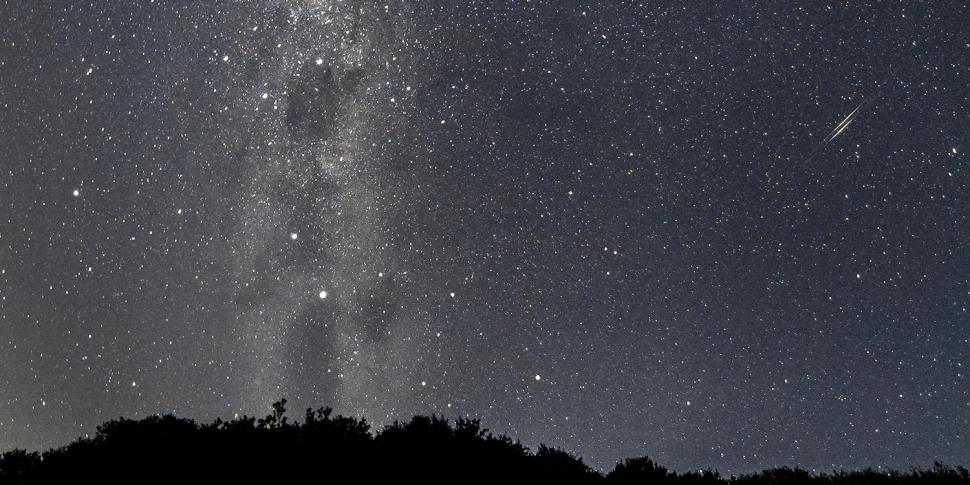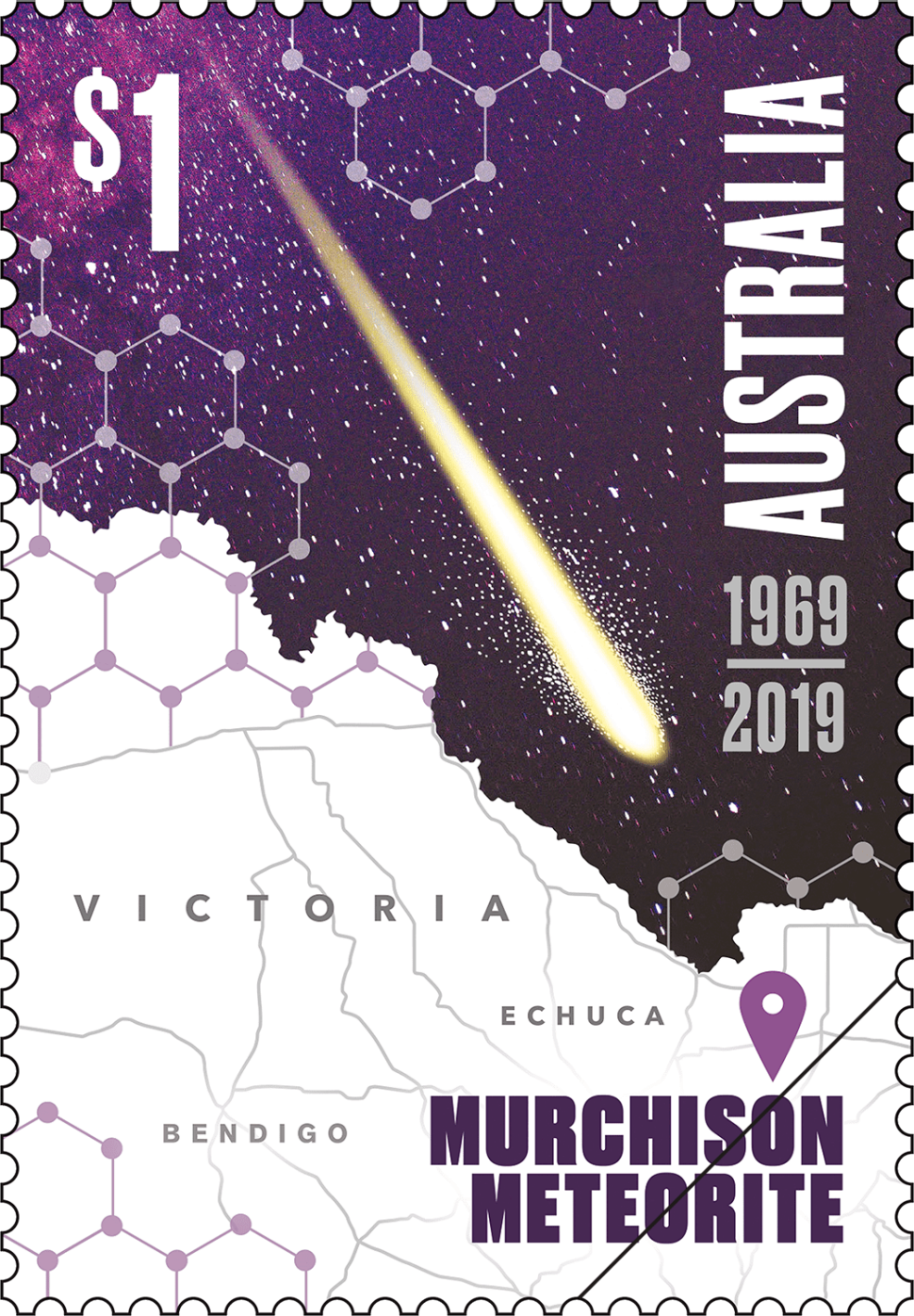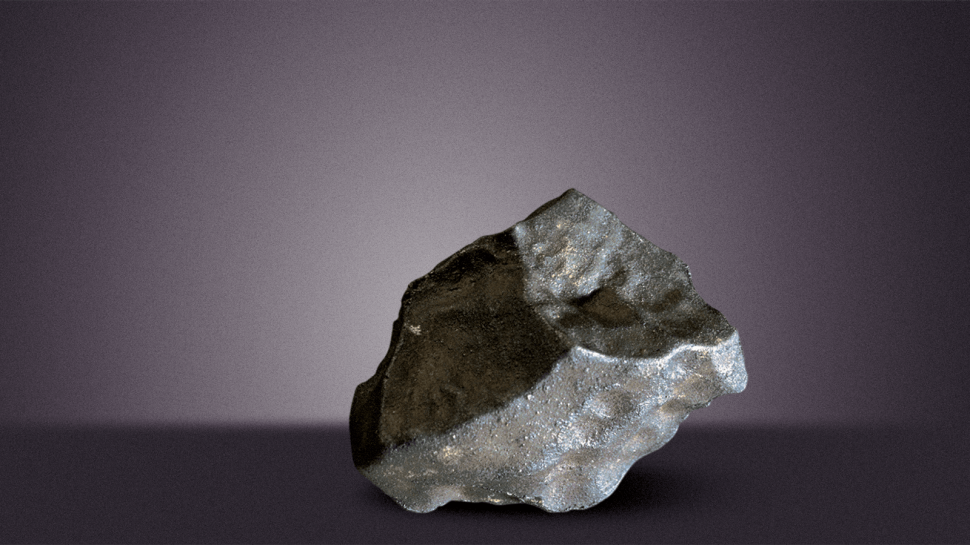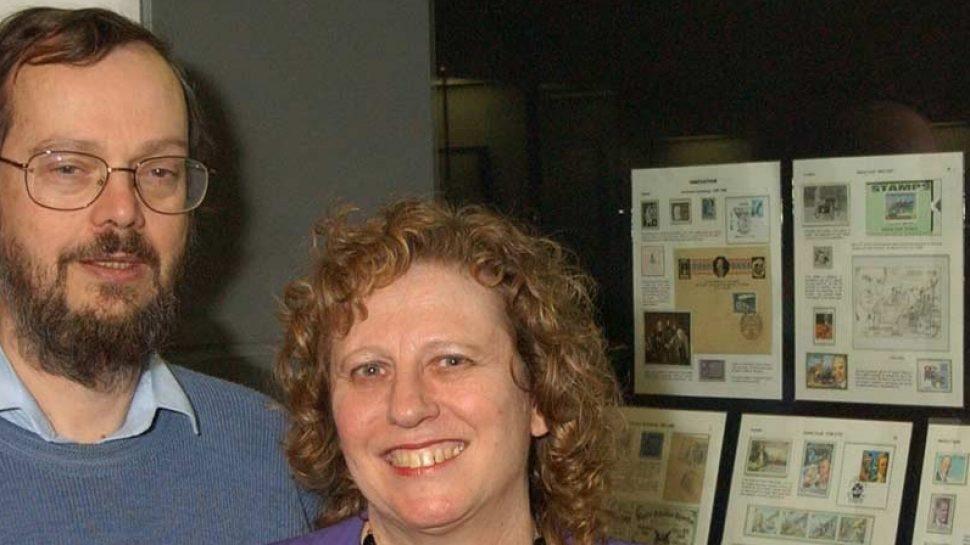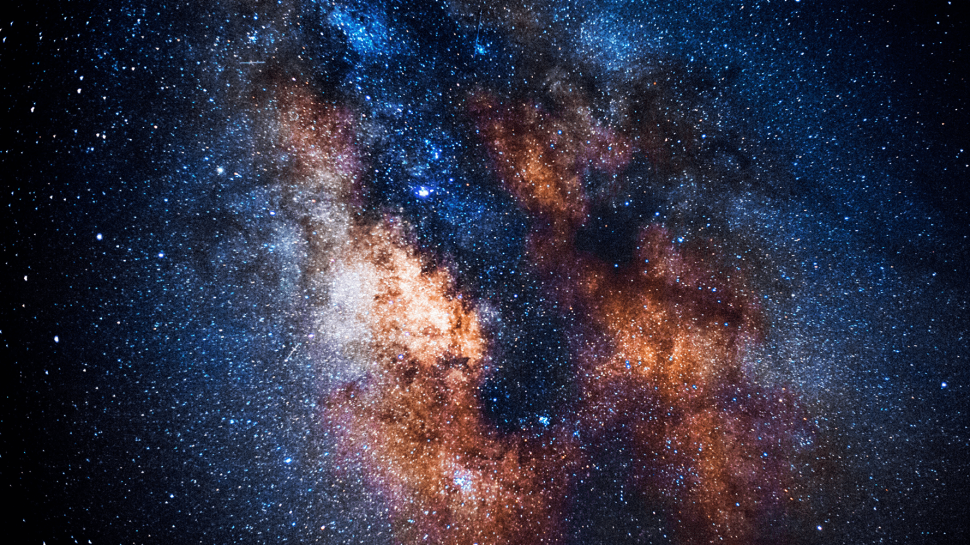The meteorite shower that came to the town of Murchison, 160 kilometres north of Melbourne, on Sunday, 28 September 1969, arrived just two months after the Apollo 11 Moon landing. Australian scientist Professor John Lovering, one of three Australia scientists to receive lunar samples from the Apollo 11 mission to analyse, declared the Murchison event “… almost as exciting as moon dust”!
The 50th Anniversary of the Murchison Meteorite stamp issue, which will be released on 10 September 2019, commemorates this historic event – an event that has led to continuing scientific study on a global scale as well as ongoing local community interest.
The stamp design, by Tim Hancock of Backpack Creative, shows the meteorite in flight, headed towards Murchison, Australia. Following the explosion and sonic boom, several hundred small meteorite fragments fell around the township. At least 100 kilograms of these fragments were recovered from an area of approximately 11 kilometres long by 3.2 kilometres wide.
About 80 kilograms from the Murchison meteorite are held in scientific collections. The bulk of the specimens in museums are in the Smithsonian Institute, in Washington, and the Field Museum, in Chicago. Significant specimens are also held by Museums Victoria in Melbourne.
We spoke to geologist Dermot Henry, Head of Sciences in the Division of Research and Collections at Museums Victoria, based at Melbourne Museum, as well as Kay Ball, President of the Murchison & District Historical Society, about why this event is not only significant but also continues to fascinate.
Dermot, who joined the museum in 1982, has published on a variety of mineralogical, petrological and meteoritical topics and has co-edited and contributed to four books on Victorian mineralogy. He was the editor of the Australian Journal of Mineralogy from 1995 to 2016. In a museum career spaning more than 35 years, Dermot has been responsible for managing and developing collections, developing public programs and exhibitions, conducting peer-reviewed research, and communicating science to a diverse range of audiences.
“Museums Victoria has 36 specimens from the Murchison Meteorite, with a total weight of about four kilograms. The samples range in weight from about 1.32 kilograms down to only a few grams. There are three specimens on display in the Meteorites section of the Dynamic Earth exhibition at Melbourne Museum,” explains Dermot.
Due to its rarity and the amount of material recovered, Murchison is one of the most extensively studied meteorites. It is also significant because of its age (4.65 billion years old) and the fact that it is considered one of the most pristine and least altered meteorites to have landed on Earth.
“Murchison is classified as a carbonaceous chondrite, a very rare type of meteorite. The research to unravel its complex chemistry and mineralogy has revealed information about the processes which occurred at the very formation of our solar system, the creation of elements in star systems and even the creation of the building blocks of life,” says Dermot.
Dermot explains that Murchison is rich in organic compounds, including amino acids, which are the building blocks of our DNA. These amino acids have been graphically represented in the stamp design.
“The organic fraction of Murchison shows that the chemical ingredients to form life exist elsewhere in our Universe. Murchison contains very high temperature calcium-aluminium-rich inclusions (CAIs) which are probably the oldest compounds to have formed in our solar system. Murchison is also a rich source of ‘pre-solar grains’, or ‘stardust’. These tiny minerals, such as microdiamonds, formed in star systems which existed long before our Sun turned on. Pre-solar grains also provide information on how the elements of the periodic table form within stars and how stars evolve over time,” says Dermot.
While thousands of meteorites have been found on Earth, only a few each year are witnessed falling and then recovered. Dermot says that in 2018 only 11 witnessed “falls” were recovered. In Australia, only 19 confirmed falls have been recorded. Of the 1,330 falls recorded in the Meteoritical Bulletin Database, only 11 are of the same classification as Murchison and the Murchison Meteorite is the largest of its type.
What Dermot describes as “a relatively innocuous looking black rock”, he also describes as a highly compelling one.
“The Murchison Meteorite transports us back in time to the early stages of the formation of our solar system from a hot gaseous cloud. Over the past 50 years Murchison has inspired so much ingenious forensic science which has reveal much about how our universe is built,” says Dermot.
Kay Ball and her husband John made the “tree change” to Murchison in the 1980s and soon became enamoured by its local history – from the rich history of the Ngurai-illum people to pioneering early settlers, farmers and irrigators. It was even the location of World War II Prisoner of War and internment camps.
The Murchison and District Historical Society began 34 years ago, following a successful “Back to Murchison” celebration in 1985. Since developing its own heritage centre, located at Riverbank Gardens, the society has gone from strength to strength. The heritage centre won an award, and the historical society won a Victorian Community History Award 2018, as well as a Greater Shepparton City Council Cultural Heritage Award in 2019, for one of its books on local history. Kay became its president in 2016.
“The most recent event in Murchison’s unique history is the fall in 1969 of the Murchison Meteorite,” says Kay.
“Many residents are old enough to have been an ‘eye-witness’ to the events of 28 September 28 1969 and each has a unique story to tell,” says Kay.
“We have a Meteorite Park with information display and a Meteorite Street in the town. Anyone interested in meteorites across the globe knows about Murchison Meteorite, let alone the locals!” notes Kay.
“Visiting geologists and cosmo-chemists often tell us it is their favourite ‘thing’. Some visitors come to Murchison just to see the town where the meteorite landed. Major museums around the globe have some of the meteorite in their collection and it is currently on display in Paris at the Natural History Museum,” says Kay.
Kay describes that the meteorite arrived with an almighty noise, described as repeated sonic booms, or like the roar of an express train.
“It also had a smell, a bit like methylated spirits, which wafted in the air due to the particular components of the meteorite,” says Kay.
“At the time, all sorts of explanations were bandied about – an aircraft collision, space junk falling to earth, or a train crash (Violet Town train crash had happened that February). No-one immediately understood that it was a meteorite crashing to earth as it travelled faster than the human eye could detect,” says Kay.
Kay says that locals were wary to handle the rocks at first, thinking it might emit some harmful substance. However, once it was understood to be a meteorite, scientists and their students flocked to the town collecting samples.
“Locals happily gave their finds to museums and universities. Many pieces ended up in America as the moon landing had occurred two months before, and America was equipped to analyse the moon rock, so could study the meteorite using the latest scientific technology,” says Kay.
“The media had a field day – the meteorite put Murchison on the map!”
Murchison has a packed program of celebratory events planned for the 50th anniversary, particularly during 27, 28 and 29 September. Events include a solar viewing, meteorite displays, astronomy shows, film screenings and a book launch. The Mayor will unveil a new display and labyrinth featuring the solar system in Meteorite Park, and there will be space treasure and meteorite hunts for children.
“We have 12 leading scientists in the fields of geology, space, meteoritics, astrophysics and cosmo-chemistry coming from Chicago Field Museum and NASA, USA, and from universities around Australia, to deliver public talks at our community centre,” says Kay.
“The issue of the Australia Post stamp is an absolute thrill and will provide some wow-factor to our 50-year celebrations. The fact that the stamp will go around Australia – putting Murchison on the map again – is wonderful! We hope that it will bring the importance of Murchison Meteorite to people’s attention, stimulate more understanding of its value and significance to science and how it has contributed to knowledge about our amazing universe,” says Kay.
“The commemorative stamp is a wonderful celebration of a very significant scientific event,” says Dermot.
“It is a powerful way of reminding people that in 1969, at the dawn of a new era in space exploration, this intriguing rock from outer space landed in our back yard, bringing with it so much information about the stars and our solar system,” says Dermot.
- Watch Professor Lovering talk about the Murchison meteorite
- Learn more about the Murchison and District Historical Society’s Murchison Meteorite centenary celebrations..
The Murchison Meteorite: 1969–2019 stamp issue is available from 10 September 2019, online, at participating Post Offices, and via mail order on 1800 331 794, while stocks last.
View the gallery and technical details from this issue
This content was produced at the time of the stamp issue release date and will not be updated.
